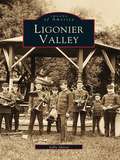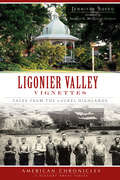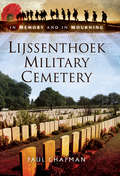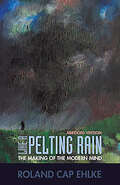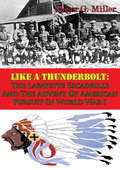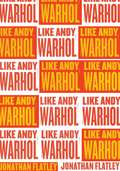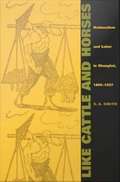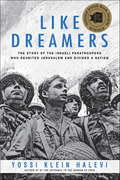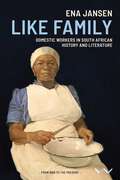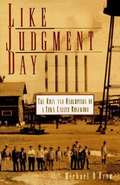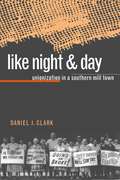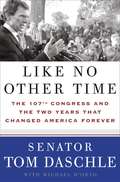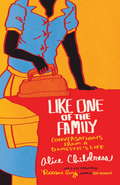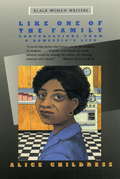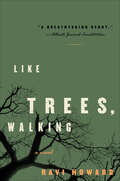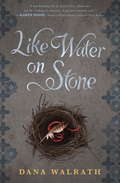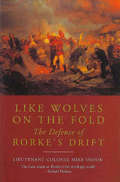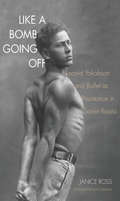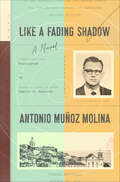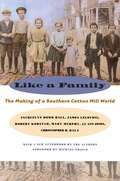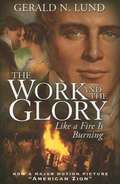- Table View
- List View
Ligonier Valley
by Sally ShireyNestled in the hills of western Pennsylvania, the Ligonier Valley has always had an air of mystery about it. The small towns and rolling countryside bear little witness to all that has occurred here. A fort was built but decayed and disappeared before being reconstructed recently. Many people have made significant contributions to the town and beyond, although time has lost many of their stories. The valley became an early industrial center with the growth of lumbering, mining, and iron production until the best resources were spent and these industries dwindled. Using hundreds of rare photographs, author Sally Shirey tells the story of this beautiful, historic area. In Ligonier Valley, readers can see the valley as it stood many years ago. After making the steep descent of Laurel Mountain, many pioneers were content to stay and build their lives in the valley. In 1758, the army of Gen. John Forbes erected Fort Ligonier. John Ramsey laid out the town of Ligonier around a public square called the Diamond. The influx of people, thanks to the Ligonier Valley Rail Road, gave rise to the hospitality industry in the valley. The Hotel Breniser, Ligonier Springs Hotel, and Kissell Springs Hotel were among those that served tourists and residents alike. Idlewild Park, dating from the 1870s, remains one of America's most beautiful amusement parks today. Reconstructed Fort Ligonier has been named to the National Register of Historic Places.
Ligonier Valley Vignettes: Tales from the Laurel Highlands (American Chronicles)
by Jennifer SopkoSecluded between Laurel Mountain and Chestnut Ridge, the Ligonier Valley has been the mountain playground of western Pennsylvania since the nineteenth century. Yet this picturesque retreat was at the tumultuous center of history--during the French and Indian War, Fort Ligonier was key to the British strategy, and in the late nineteenth century, the Ligonier Valley Rail Road helped transform the industry of the region. Author Jennifer Sopko traces the story of the valley and its residents through a series of fascinating vignettes. From the earliest histories to nostalgic reminiscences of the Ligonier Opera House, socials at the Valley Dairy ice cream parlor and bygone days at Idlewild Park, Sopko captures the history and spirit of the Ligonier Valley and its communities.
Lijssenthoek Military Cemetery (In Memory and in Mourning)
by Paul ChapmanThis is a comprehensive and highly emotive volume, borne of years of intensive research and many trips to the battlefields of the Great War. It seeks to humanise the Lijssenthoek Military Cemetery, to offer the reader a chance to engage with the personal stories of the soldiers whose names have been chiseled there in stone. Poignant stories of camaraderie, tragic twists of fate and noble sacrifice have been collated in an attempt to bring home the reality of war and the true extent of its tragic cost. It is hoped that visitors to the battlefields, whether their relatives are listed within or not, will find their experience enriched by having access to this treasure trove of stories.
Like A Pelting Rain: The Making of the Modern Mind
by Roland Cap EhlkeWhen it comes to analyzing today's culture, people talk about politics, economics, and even morals. Like a Pelting Rain: The Making of the Modern Mind goes deeper and looks at the spiritual condition of Western civilization.How we arrived at where we are is the long and complex interplay of theology and culture. Understanding the trends of the times does not necessitate accepting them. God calls upon Christians to contend for the faith. The Holy Spirit is still at work, and the Gospel remains the power of God for the salvation of all who believe!
Like A Thunderbolt: The Lafayette Escadrille And The Advent Of American Pursuit In World War I [Illustrated Edition]
by Roger G. MillerIncludes 29 IllustrationsThe advent of an American squadron, or "escadrille," within the French air force, the Service Aeronautique, had been far from a simple process. French leaders initially held the belief, common at the time, that the war begun in 1914 would be a short one. The potential value of American volunteers fighting for France both for propaganda purposes and for helping bring the power of the New World into the war on the side of the Allies was thus irrelevant at first. By early 1915, however, the French began to accept American volunteers and assign them to escadrilles. In early 1916, the Service Aeronautique united several of these men in an elite chasse unit, which quickly earned an enviable reputation for audacity, bravery, and élan.Success of this unit, the Lafayette Escadrille, had three consequences. First, its existence encouraged a large number of Americans, far more than needed in one escadrille, to volunteer for French aviation. These individuals, identified unofficially as members of a "Lafayette Flying Corps," served in numerous French air units. Second, the publicity surrounding the Lafayette Escadrille contributed favorable press for the Allied cause, strengthened ties between France and the U.S., and ultimately helped prepare the U.S. to participate on the Allied side of the conflict. Third, the existence of a large body of experienced American pilots provided combat veterans for the Air Service of the American Expeditionary Forces (AEF) in France when the U.S. ultimately entered the war. These veterans helped instill in the U.S. Air Service the attitudes and practices of the Service Aeronautique, an infusion especially reflected in two U.S. pursuit squadrons, the 103rd Aero Squadron, made up of Lafayette Escadrille pilots, and the 94th Aero Squadron, the most famous American combat squadron of the war.
Like Andy Warhol
by Jonathan FlatleyScholarly considerations of Andy Warhol abound, including very fine catalogues raisonné, notable biographies, and essays in various exhibition catalogues and anthologies. But nowhere is there an in-depth scholarly examination of Warhol’s oeuvre as a whole—until now. Jonathan Flatley’s Like Andy Warhol is a revelatory look at the artist’s likeness-producing practices, not only reflected in his famous Campbell’s soup cans and Marilyn Monroe silkscreens but across Warhol’s whole range of interests including movies, drag queens, boredom, and his sprawling collections. Flatley shows us that Warhol’s art is an illustration of the artist’s own talent for “liking.” He argues that there is in Warhol’s productions a utopian impulse, an attempt to imagine new, queer forms of emotional attachment and affiliation, and to transform the world into a place where these forms find a new home. Like Andy Warhol is not just the best full-length critical study of Warhol in print, it is also an instant classic of queer theory.
Like Cattle and Horses: Nationalism and Labor in Shanghai, 1895-1927
by S. A. SmithIn Like Cattle and Horses Steve Smith connects the rise of Chinese nationalism to the growth of a Chinese working class. Moving from the late nineteenth century, when foreign companies first set up factories on Chinese soil, to 1927, when the labor movement created by the Chinese Communist Party was crushed by Chiang Kai-shek, Smith uses a host of documents--journalistic accounts of strikes, memoirs by former activists, police records--to argue that a nationalist movement fueled by the effects of foreign imperialism had a far greater hold on working-class identity than did class consciousness. While the massive wave of labor protest in the 1920s was principally an expression of militant nationalism rather than of class consciousness, Smith argues, elements of a precarious class identity were in turn forged by the very discourse of nationalism. By linking work-related demands to the defense of the nation, anti-imperialist nationalism legitimized participation in strikes and sensitized workers to the fact that they were worthy of better treatment as Chinese citizens. Smith shows how the workers' refusal to be treated "like cattle and horses" (a phrase frequently used by workers to describe their condition) came from a new but powerfully felt sense of dignity. In short, nationalism enabled workers to interpret the anger they felt at their unjust treatment in the workplace in political terms and to create a link between their position as workers and their position as members of an oppressed nation. By focusing on the role of the working class, Like Cattle and Horses is one of very few studies that examines nationalism "from below," acknowledging the powerful agency of nonelite forces in promoting national identity. Like Cattle and Horses will interest historians of labor, modern China, and nationalism, as well as those engaged in the study of revolutions and revolt.
Like Dreamers: The Story of the Israeli Paratroopers Who Reunited Jerusalem and Divided a Nation
by Yossi Klein Halevi“Powerful. . . . beautifully written . . . . There is much to admire . . . especially Mr. Halevi’s skill at getting inside the hearts and minds of these seven men” —Ethan Bronner, New York TimesFollowing the lives of seven young members from the 55th Paratroopers Reserve Brigade, the unit responsible for restoring Jewish sovereignty to Jerusalem during the 1967 Six Day War, acclaimed journalist Yossi Klein Halevi reveals how this band of brothers played pivotal roles in shaping Israel’s destiny long after their historic victory. While they worked together to reunite their country in 1967, these men harbored drastically different visions for Israel’s future.One emerges at the forefront of the religious settlement movement, while another is instrumental in the 2005 unilateral withdrawal from Gaza. One becomes a driving force in the growth of Israel’s capitalist economy, while another ardently defends the socialist kibbutzim. One is a leading peace activist, while another helps create an anti-Zionist terror underground in Damascus.Featuring eight pages of black-and-white photos and maps, Like Dreamers is a nuanced, in-depth look at these diverse men and the conflicting beliefs that have helped to define modern Israel and the Middle East.“A beautifully written and sometimes heartbreaking account of these men, their families, and their nation.” —Booklist, starred review“Halevi's book is executed with imagination, narrative drive, and, above all, deep empathy for a wide variety of Israelis, and the result is a must-read for anyone with an interest in contemporary Israel and the Israeli-Palestinian conflict. —Publishers Weekly, starred review“Mr. Halevi’s masterly book brings us into [the] . . . debate and the lives of those who live it.” —Elliott Abrams, Wall Street Journal
Like Family: Domestic workers in South African history and literature
by Ena JansenAn analytic and historical perspective of literary texts to understand the position of domestic workers in South AfricaMore than a million black South African women are domestic workers. Precariously situated between urban and rural areas, rich and poor, white and black, these women are at once intimately connected and at a distant remove from the families they serve. Ena Jansen shows that domestic worker relations in South Africa were shaped by the institution of slavery, establishing social hierarchies and patterns of behavior that persist today. To support her argument, Jansen examines the representation of domestic workers in a diverse range of texts in English and Afrikaans. Authors include André Brink, JM Coetzee, Imraan Coovadia, Nadine Gordimer, Elsa Joubert, Antjie Krog, Sindiwe Magona, Kopano Matlwa, Es'kia Mphahlele, Sisonke Msimang, Zukiswa Wanner and Zoë Wicomb. Like Family is an updated version of the award-winning Soos familie (2015) and the highly-acclaimed 2016 Dutch translation, Bijna familie.
Like Judgment Day: The Ruin and Redemption of a Town Called Rosewood
by Michael D'OrsoThe 1923 destruction of the town of Rosewood, Florida, is a shocking episode in the history of American race relations. In a week of terror that followed the alleged rape of a white woman, at least six residents of the mostly black town were murdered. The terrified survivors were chased into the swamps, and their houses, churches, and stores burned. For over 60 years, the former citizens of Rosewood lived quietly with their grief and fear. Finally, through the determined efforts of Rosewood descendants, persistent journalists, and talented lawyers, the long-buried story was brought to light.
Like Night and Day: Unionization in a Southern Mill Town
by Daniel J. ClarkDaniel Clark demonstrates the dramatic impact unionization made on the lives of textile workers in Henderson, North Carolina, in the decade after World War II. Focusing on the Harriet and Henderson Cotton Mills, he shows that workers valued the Textile Workers Union of America for more than the higher wages and improved benefits it secured for them. Specifically, Clark points to the importance members placed on union-instituted grievance and arbitration procedures, which most labor historians have seen as impediments rather than improvements. From the signing of contracts in 1943 until a devastating strike fifteen years later, the union gave local workers the tools they needed to secure at least some measure of workplace autonomy and respect from their employer. Union-instituted grievance procedures were not without flaws, says Clark, but they were the linchpin of these efforts. When arbitration and grievance agreements collapsed in 1958, the result was the strike that ultimately broke the union. Based on complete access to company archives and transcripts of grievance hearings, this case study recasts our understanding of labor-management relations in the postwar South.
Like No Other
by Anna Jacobs1755. Rachel Smedling is not like the other women in her isolated Pennine village: she is taller, stronger and weaves cloth like a man. Without her, the household would fall apart, for her mother is ailing and her vicious drunkard father seems to hate her so much, he would happily offer money to any man who would wed her. When her mother dies, Rachel is at the mercy of her increasingly violent father. Her only escape is by marrying a kindly man with whom she finds happiness, if not passion, and her life begins to seem complete. Rachel's growing prosperity infuriates her father and his cronies, however, and they will stop at nothing to see her destroyed.
Like No Other
by Anna Jacobs1755. Rachel Smedling is not like the other women in her isolated Pennine village: she is taller, stronger and weaves cloth like a man. Without her, the household would fall apart, for her mother is ailing and her vicious drunkard father seems to hate her so much, he would happily offer money to any man who would wed her. When her mother dies, Rachel is at the mercy of her increasingly violent father. Her only escape is by marrying a kindly man with whom she finds happiness, if not passion, and her life begins to seem complete. Rachel's growing prosperity infuriates her father and his cronies, however, and they will stop at nothing to see her destroyed.
Like No Other
by Anna JacobsRachel Smedling is not like the other women in her isolated Pennine village: she is taller, stronger and weaves cloth like a man. Without her, the household would fall apart, for her mother is ailing and her vicious drunkard father seems to hate her so much, he would happily offer money to any man who would wed her. When her mother dies, Rachel is at the mercy of her increasingly violent father. Her only escape is by marrying a kindly man with whom she finds happiness, if not passion, and her life begins to seem complete. Rachel's growing prosperity infuriates her father and his cronies, however, and they will stop at nothing to see her destroyed.(P)2004 Isis Publishing Ltd
Like No Other Lover
by Julie Anne LongNow or Never. . . It's the last chance for Cynthia Brightly, the ton's most bewitching belle. Driven out of London by a secret scandal, she must find a grand husband at the Redmonds' house party before word of her downfall spreads all over England. Unfortunately, someone at Pennyroyal Green is already privy to the whispers of broken engagements and dueling lovers: Miles Redmond, renowned explorer and-thanks to his brother's disappearance-heir to the family's enormous fortune. Miles set his sights on Cynthia once, at a time when the ambitious beauty thought herself too good for a second son. But now he's heir apparent, relishing his control. He strikes a bargain with her: he'll keep Cynthia's steamy secrets and help her find a husband among the guests-in exchange for a single kiss. What could be the harm in a simple kiss? Cynthia is about to discover that it's enough to unleash fierce passion-and that Miles Redmond is most certainly like no other lover in the world.
Like No Other Time: The 107th Congress and the Two Years That Changed America Forever
by Tom Daschle Michael D'OrsoTom Daschle, the Majority Leader of the historic 107th Senate, presents a candid insider’s account of the workings of the U.S. government during two of the most tumultuous years in the nation’s history.The 107th Congress faced a time like no other in the life of the nation. This was the era of the first presidential election to be decided by the United States Supreme Court, the fifty-fifty Senate, the horror of September 11, the anthrax attacks on media and the government (including Daschle’s own office), the war on terrorism, corporate scandals that shook the economy, the inexorable move toward war with Iraq, and other dramatic events, all leading up to the historic midterm elections of 2002.Through it all, Senator Tom Daschle had, with the exception of the President, the most privileged view of these unfolding developments, both in front of and behind the closed doors of government. In Like No Other Time, Daschle offers a riveting account of his singular perspective on a time when the nation faced deadly and elusive external enemies and a level of domestic political contention rarely seen in American history. Senator Daschle is un-flinching in his impressions of the key political figures of our time from both parties. The result is an acutely perceptive assessment of how our government met—and sometimes did not meet—the challenges of a remarkable era.As it was during the years of the 107th Congress, the United States is once again at a critical and historic crossroads. Our choices, based on what we have learned from our recent past, will affect our future in profound ways. For Senator Daschle, the first and perhaps most important choice lies with what kind of representation and leadership we want in government. It is a choice between a political party with a core philosophical belief in the power of our collective will to confront these challenges through our government, and one dominated by a group of people who don’t like and don’t believe in government.
Like One of The Family
by Alice ChildressA new edition of Alice Childress’s classic novel about African American domestic workers, featuring a foreword by Roxane GayFirst published in Paul Robeson’s newspaper, Freedom, and composed of a series of conversations between Mildred, a black domestic, and her friend Marge, Like One of the Family is a wry, incisive portrait of working women in Harlem in the 1950’s. Rippling with satire and humor, Mildred’s outspoken accounts vividly capture her white employers’ complacency and condescension—and their startled reactions to a maid who speaks her mind and refuses to exchange dignity for pay.Upon publication the book sparked a critique of working conditions, laying the groundwork for the contemporary domestic worker movement. Although she was critically praised, Childress’s uncompromising politics and unflinching depictions of racism, classism, and sexism relegated her to the fringe of American literature. Like One of the Family has been long overlooked, but this new edition, featuring a foreword by best-selling author Roxane Gay, will introduce Childress to a new generation.
Like One of the Family: Conversations from a Domestic's Life
by Alice ChildressLike One of the Family, which provides historical context for Kathryn Stockett's novel, The Help, is comprised of a series of conversations between Mildred, a black domestic, and her friend Marge. They create a vibrant picture of the life of a black working woman in New York in the 1950s.Rippling with satire and humor, Mildred’s outspoken accounts capture vividly her white employers’ complacency and condescension—and startled reactions to a maid who speaks her mind. As Mildred declares to a patronizing employer that she is not just like one of the family, or explains to Marge how a tricky employer has created a system of “half days off” to cheat her help, we gain a glimpse not only of one woman’s day to day struggle, but of her previous ache of racial oppression. A domestic who refuses to exchange dignity for pay, Mildred is an inspiring conversationalist, a dragon slayer in a segregated world. The conversations in the book were first published in Freedom, the newspaper edited by Paul Robeson, and later in the Baltimore Afro-American. The book was originally published in the 1950s by in Brooklyn–based Independence Press, and Beacon Press brought out a new edition of it in 1986 with an introduction by the literary and cultural critic Trudier Harris.
Like Trees, Walking: A Novel
by Ravi HowardBased on the true story of a modern-day lynching in America, Ravi Howard's widely acclaimed debut novel exposes one of the most tragic chapters in the history of the American South.On the morning of March 21, 1981, in Mobile, Alabama, nineteen-year-old Michael Donald was found dead, his body badly beaten and hanging from a tree on Herndon Avenue. Brothers Paul and Roy Deacon of the Deacon Memorial Funeral Home are called upon to bury their close friend and classmate, and the experience will leave them forever changed. Along with other residents of their hometown, the Deacon brothers must struggle to understand the circumstances surrounding Donald's murder—the city's first lynching in more than sixty years and a gruesome reminder of racial inequalities in the New South.
Like Water on Stone
by Dana Walrath"Evocative and hopeful," says Newbery Honor-Winner Rita Williams-Garcia of this intense survival story set during the Armenian genocide of 1915. It is 1914, and the Ottoman Empire is crumbling into violence. Beyond Anatolia, in the Armenian Highlands, Shahen Donabedian dreams of going to New York. Sosi, his twin sister, never wants to leave her home, especially now that she is in love. At first, only Papa, who counts Turks and Kurds among his closest friends, stands in Shahen's way. But when the Ottoman pashas set in motion their plans to eliminate all Armenians, neither twin has a choice. After a horrifying attack leaves them orphaned, they flee into the mountains, carrying their little sister, Mariam. But the children are not alone. An eagle watches over them as they run at night and hide each day, making their way across mountain ridges and rivers red with blood. "I have walked through the remnants of the Armenian civilization in Palu and Chunkush, I have stood on the banks of the Euphrates. And still I was unprepared for how deeply moved I would be by Dana Walrath's poignant, unflinching evocation of the Armenian Genocide. Her beautiful poetry and deft storytelling stayed with me long after I had finished this powerful novel in verse." --Chris Bohjalian, author of The Sandcastle Girls and Close Your Eyes, Hold Hands "A heartbreaking tale of familial love, blind trust, and the crushing of innocence. A fine and haunting work." --Karen Hesse, Newbery Medal-winning author of Out of the Dust "This eloquent verse novel brings one of history's great tragedies to life." --Margarita Engle, Newbery Honor-winning author of The Surrender Tree"This beautiful, yet at times brutally vivid, historical verse novel will bring this horrifying, tragic period to life for astute, mature readers." --School Library Journal, Starred From the Hardcover edition.
Like Wolves on the Fold: The Defence of Rorkes Drift
by Mike SnookWednesday 22 January 1879 was one of the most dramatic days in the annals of military history. In the morning, a modern British army was swept aside by the onset of a seemingly unstoppable host at Isandlwana. Nearby, at a remote border outpost on the Buffalo River, a single company of the 24th Regiment and a few dozen recuperating hospital patients were passing another hot, monotonous day. News of the disaster across the river came like a bolt from the blue. Retreat was not an option. It seemed certain that the Rorkes Drift detachment would share the terrible fate of their comrades.Colonel Snook brings the insights of a military professional to bear in this strikingly original account. It is an extraordinary tale a victory largely achieved by the sheer bloody-mindedness in adversity of the British infantryman, fighting at the remarkable odds of over thirty to one. The heroics of all eleven VC winners are recounted in detail, and we are offered new insights into how the Zulu attack unfolded and how 150 men achieved their improbable victory. The author describes the remainder of the war, from the recovery of the lost Queens Colour of the 24th to the climactic charge of the 17th Lancers at Ulundi. We return to Isandlwana to consider culpability, and learn of the often tragic fates of many of the wars participants.
Like a Bomb Going Off
by Janice Ross Ms Lynn GarafolaEveryone has heard of George Balanchine. Few outside Russia know of Leonid Yakobson, Balanchine's contemporary, who remained in Lenin's Russia and survived censorship during the darkest days of Stalin. Like Shostakovich, Yakobson suffered for his art and yet managed to create a singular body of revolutionary dances that spoke to the Soviet condition. His work was often considered so culturally explosive that it was described as "like a bomb going off." Based on untapped archival collections of photographs, films, and writings about Yakobson's work in Moscow and St. Petersburg for the Bolshoi and Kirov ballets, as well as interviews with former dancers, family, and audience members, this illuminating and beautifully written biography brings to life a hidden history of artistic resistance in the USSR through this brave artist, who struggled against officially sanctioned anti-Semitism while offering a vista of hope.
Like a Fading Shadow: A Novel
by Antonio Muñoz MolinaA hypnotic novel intertwining the author’s past with James Earl Ray’s attempt to escape after shooting Martin Luther King Jr.The year is 1968 and James Earl Ray has just shot Martin Luther King Jr. For two months he evades authorities, driving to Canada, securing a fake passport, and flying to London, all while relishing the media’s confusion about his location and his image on the FBI’s Most Wanted list. Eventually he lands at the Hotel Portugal in Lisbon, where he anxiously awaits a visa to Angola. But the visa never comes, and for his last ten days of freedom, Ray walks around Lisbon, paying for his pleasures and rehearsing his fake identities. Using recently declassified FBI files, Antonio Muñoz Molina reconstructs Ray’s final steps through the Portuguese capital, taking us inside his feverish mind, troubled past, and infamous crime. But Lisbon is also the city that inspired Muñoz Molina’s first novel, A Winter in Lisbon, and as he returns now, thirty years later, it becomes the stage for and witness to three alternating stories: Ray in 1968 at the center of an international manhunt; a thirty-year-old Muñoz Molina in 1987 struggling to find his literary voice; and the author in the present, reflecting on his life and the form of the novel as an instrument for imagining the world through another person’s eyes. Part historical fiction, part fictional memoir, Like a Fading Shadow masterfully explores the borders between the imagined, the reported, and the experienced past in the construction of identity.
Like a Family
by Mary Murphy Robert R. Korstad James L. Leloudis Jacquelyn Dowd HallSince its original publication in 1987, Like a Family has become a classic in the study of American labor history. Basing their research on a series of extraordinary interviews, letters, and articles from the trade press, the authors uncover the voices and experiences of workers in the Southern cotton mill industry during the 1920s and 1930s. Now with a new afterword, this edition stands as an invaluable contribution to American social history. "The genius of Like a Family lies in its effortless integration of the history of the family--particularly women--into the history of the cotton-mill world.--Ira Berlin, New York Times Book Review "Like a Family is history, folklore, and storytelling all rolled into one. It is a living, revelatory chronicle of life rarely observed by the academe. A powerhouse.--Studs Terkel"Here is labor history in intensely human terms. Neither great impersonal forces nor deadening statistics are allowed to get in the way of people. If students of the New South want both the dimensions and the feel of life and labor in the textile industry, this book will be immensely satisfying.--Choice
Like a Fire is Burning (The Work and the Glory #2)
by Gerald N. LundThe epic saga of the Steed family continues in Volume 2. Swept up in the great drama as the infant Church expands and spreads westward into Ohio and Missouri, the Steeds become eyewitnesses of miracles as well as the horrors of mob mayhem.
